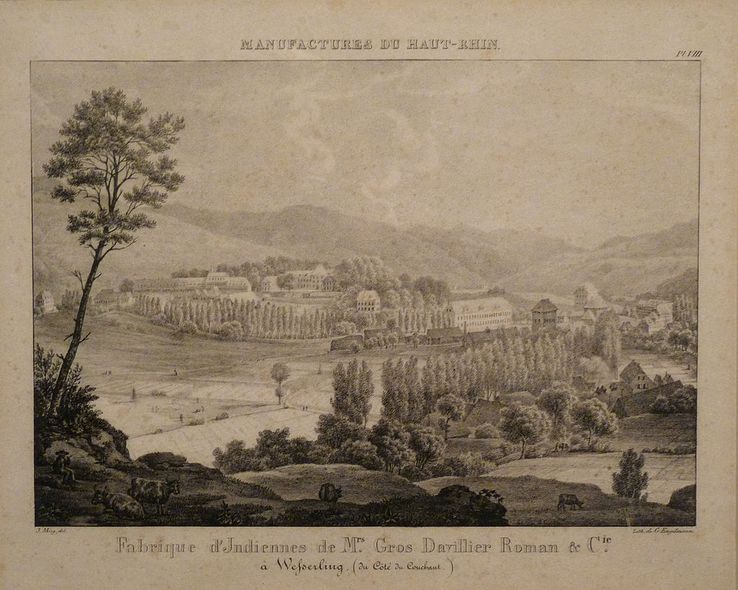
The importation and consumption of Indian women in France from the 17th to the 19th centuries

Listen to the emission of 53min History of the textile (3)
Third and last program dedicated to the history of textile, this morning the import and consumption of Indian in France of the seventeenth and nineteenth.
Mrs. Gros Davillier Roman & Cie in Wesserling
“The decision of the King’s council of October 2, 1686 put an end to the importation of Indian and most of the colored fabrics of Asia: The large quantity of cotton cloth painted in India gave rise to Not only to the transport of several millions out of the kingdom, but also to a diminution of the manufactories long established in France for the stuffs of silk, wool, linen, hemp, and at the same time the desertion of the workmen. [It is therefore necessary] to prevent the flow and flow of the said painted canvases, to defend any persons of whatever quality and condition, to expose them, to sell, and to individuals to buy them. Which will be found in the shops will be burnt, and the workshops installed in the kingdom to print the white cotton fabrics will be closed and the molds used for this work will be broken According to the municipal archives of Lyon “
This morning, we are dealing with the effects of the globalization of trade: the tremendous enthusiasm for fabrics from India called “Indian”, which, to the surprise of commercial companies, became the main commodity transported between Asia and Europe in the eighteenth century.
To the point of scaring the French entrepreneurs who had them banned in 1686. Mme de Pompadour obtained in 1759 that their importation was again authorized. Meanwhile, smuggling raged, and these fabrics reached France under the cloak. And this prohibition allowed foreign manufacturers (British, German, Swiss) to perfect themselves in this technology, prohibited in France.
This is how Christophe-Philippe Oberkampf, a German of Württemberg, takes advantage of the authorization of painted canvases to invent the Jouy-en-Josas factory, and thus Jouy’s canvas.
A program co-hosted by Séverine Liatard
The texts are read by Daniel Kenigsberg
speakers
Aziza Gril-Mariotte: Lecturer in History of Art at the University of Haute-Alsace. Specializing in Indian and artistic creation in the textile industry in the 18th and 19th centuries, she has published numerous articles on the subject and a book
Brigitte Nicolas
05/24/2017
Link

